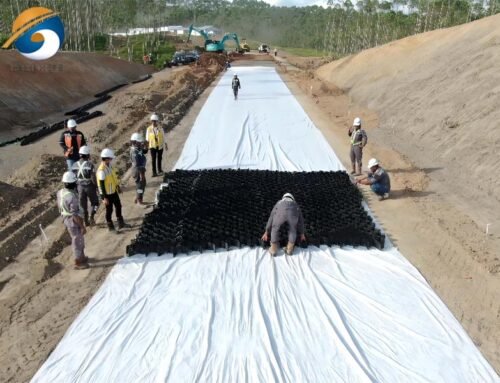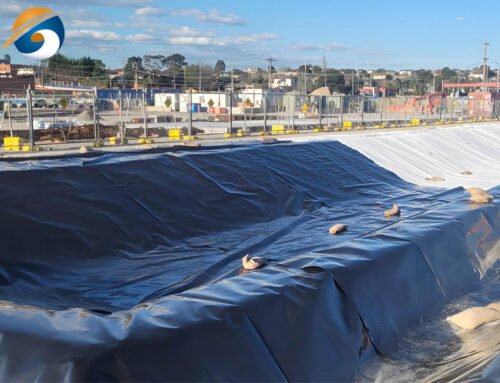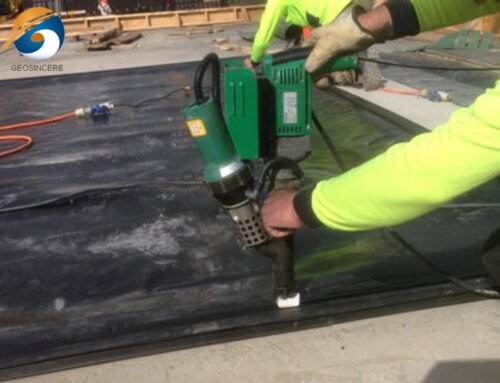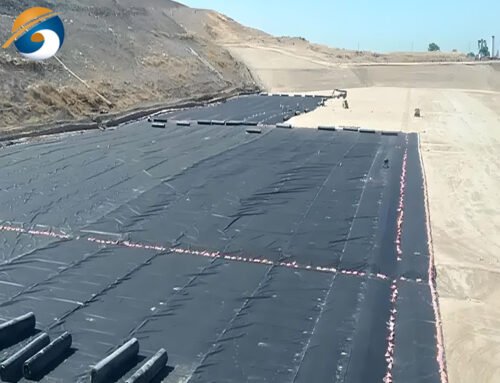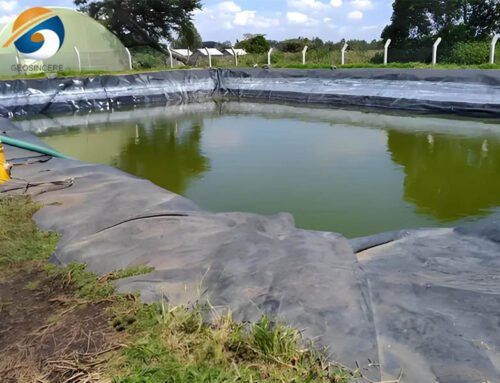Selecting the optimal geotextile fabric for your road construction or repair project transcends the simple convenience of a “near me” search. Geotextile Road Fabric Near Me – While local suppliers offer undeniable logistical perks – faster delivery, reduced freight costs, and easier coordination.This decision is fundamentally a critical engineering choice with profound implications for the road’s structural integrity, lifespan, environmental performance, and overall cost-effectiveness. Choosing the wrong fabric, even from the closest supplier, can lead to premature failure, costly repairs, and compromised safety. This comprehensive guide delves deeper into the GEOSINCERE Geotextile technical nuances, empowering you to make an informed, performance-driven selection that leverages local availability without sacrificing precision.
1. Define the Primary Function(s) with Precision: The Core Imperative
Geotextiles in roadways are engineered solutions, not generic blankets. Pinpointing the dominant functional requirement is the bedrock of selection:
1.1 Geotextile Road Fabric – Separation:
This is arguably the most common function, preventing the intermixing of soft, wet subgrade soil with the overlying aggregate base/subbase. Failure leads to contamination, loss of aggregate strength, rutting, and potholes. Critical Properties:Exceptional puncture resistance (CBR test – ASTM D6241) is paramount to withstand the impact and pressure of aggregate placement and compaction. High tensile strength (ASTM D4632) prevents tearing under load, ensuring the fabric maintains its barrier integrity long-term. Durability against installation stresses is non-negotiable.
1.2 Geotextile Road Fabric – Filtration:
Essential for allowing water to drain *out* of the soil structure laterally beneath the road while simultaneously preventing the migration of fine soil particles into the aggregate or drainage system. Clogging (“blinding”) or soil loss (“piping”) are the failure modes. Critical Properties: The relationship between the geotextile’s Apparent Opening Size (AOS – ASTM D4751, e.g., O95) and the soil’s particle size distribution (especially the D85 size) is crucial. Permeability/Permittivity (ASTM D4491) must be sufficient to handle the anticipated water flow without buildup. Long-term flow compatibility under load (gradient ratio testing) is vital for sustained performance.
1.3 Geotextile Road Fabric – Reinforcement:
Used to improve the structural capacity of weak subgrades by distributing loads over a wider area, effectively creating a stabilized composite foundation. This reduces differential settlement and increases overall bearing capacity. Critical Properties: High tensile strength and modulus at low strains (ASTM D4595, Wide-Width Strip Test) are essential to mobilize tensile forces effectively within the soil matrix. Excellent soil-fabric interaction (friction characteristics) is required for load transfer. Junction strength is critical for woven fabrics.
1.4 Geotextile Road Fabric – Drainage:
While less frequent as a primary function for standard road bases than separation/filtration, geotextiles can act as a planar conduit for water flow within specific pavement sections, such as edge drains or behind retaining walls adjacent to roadways. Critical Properties: High in-plane flow capacity, known as transmissivity (ASTM D4716), is the key parameter. This measures the volume of water the fabric can transmit within its plane under specific gradients and confining pressures. Adequate compression resistance is also needed.
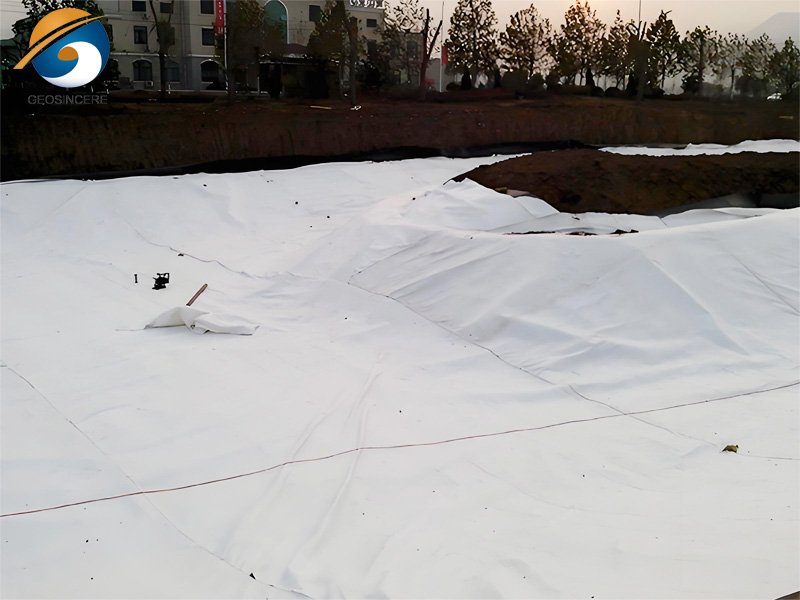
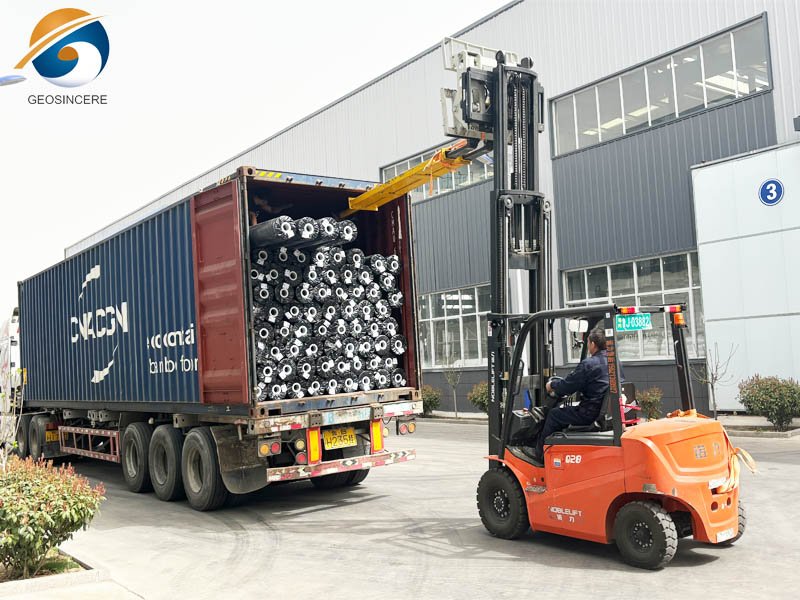
2. Conduct a Thorough Site-Specific Conditions Audit: Context is King
The local environment imposes unique demands that dictate fabric specifications:
2.1 Geotextile Road Fabric – Subgrade Soil Type:
A detailed grain size analysis (sieve and hydrometer) is fundamental. High fines content (silts/clays) demands careful AOS selection to prevent blinding and requires fabrics with good flow characteristics even under pressure. Coarse, angular subgrades necessitate exceptionally high puncture resistance. The soil’s plasticity index also influences long-term interaction.
2.2 Geotextile Road Fabric – Traffic Loading (ESALs – Equivalent Single Axle Loads):
Heavy, frequent traffic imposes significant cyclic stresses. This demands geotextiles with high tensile strength, puncture resistance, tear resistance (ASTM D4533), and excellent fatigue resistance to prevent degradation over time. Light traffic allows for more moderate specifications.
2.3 Geotextile Road Fabric – Aggregate Properties:
Sharp,crushed stone is significantly more aggressive during placement than smooth, rounded gravel. Higher CBR puncture strength and robust survivability ratings are mandatory with angular aggregate to withstand piercing during dumping and compaction.
2.4 Geotextile Road Fabric – Hydrology & Climate:
Sites with high groundwater tables, significant rainfall, or poor natural drainage place immense importance on filtration and permeability. In freeze-thaw regions, the fabric must withstand physical damage from frost heave and ice lens formation, requiring high durability and resistance to physical damage cycles. Arid regions might prioritize UV resistance more heavily.
2.5 Geotextile Road Fabric – Construction Methods & Access:
Evaluate installation rigor. Will the fabric be placed directly on a rough, potentially sharp subgrade? Will initial aggregate lifts be thin (< 6 inches)? Will heavy equipment operate directly on the fabric? Severe conditions demand fabrics meeting AASHTO M288 Class 2 (Severe) survivability requirements, specifying higher minimum thresholds for strength, puncture, and tear during installation. Remote sites might prioritize roll size/weight for easier handling.
3. Match Material Type Rigorously to Function & Conditions: Beyond Basics
Understanding the inherent strengths and limitations of geotextile types is crucial:
3.1 Woven Geotextiles:Created by weaving filaments (mono/multi) or tapes (slit film).
- Multifilament Wovens: Offer high tensile strength/modulus (excellent for reinforcement), good puncture resistance, controlled AOS (good for separation/filtration with coarser soils), and relatively high permeability. They provide a stable, dimensionally consistent platform.
- Slit-Film Wovens:Provide very high tensile strength at lower cost but have significantly lower permeability. Their primary role is separation and reinforcement where high in-plane flow is not required. They can be more susceptible to installation damage if not robust enough.
3.2 Nonwoven Geotextiles:
Formed by entangling fibers (usually PP or PET) mechanically (needle-punching), thermally, or chemically.
- Needle-Punched Nonwovens: The workhorse for road separation and filtration. Offer excellent permeability/permittivity, good conformability to uneven surfaces, moderate puncture resistance, and excellent filtration characteristics across a wide range of soils. Their survivability under typical conditions is generally good (often Class 1 or 2). They are less ideal for high-tensile reinforcement roles.
3.3 Composites geotextiles:
Some products combine layers (e.g., nonwoven for filtration + a woven or net for reinforcement) to achieve multiple high-performance functions simultaneously. Consider these for complex site requirements.
4. Decode Specifications: Demand Data Not Just Marketing
Never select based solely on weight (oz/yd² or g/m²) – it’s an inadequate indicator of performance. Insist on certified test reports (Mill Test Reports – MTRs) verifying compliance with relevant standards like AASHTO M288 (USA) or regional equivalents. Key properties to scrutinize:
4.1 Physical Survivability:
AASHTO M288 Class 1 (Moderate) or Class 2 (Severe) defines minimum thresholds for Grab Tensile (ASTM D4632), CBR Puncture (ASTM D6241), and Trapezoidal Tear (ASTM D4533) based on anticipated installation conditions. Match the Class to your site audit.
4.2 Hydraulic Properties:
AOS (O95 – ASTM D4751) for filtration compatibility. Permittivity (ASTM D4491) for cross-plane flow. Transmissivity (ASTM D4716) if planar drainage is required.
4.3 Mechanical Properties:
Grab Tensile Strength & Elongation (ASTM D4632), Wide-Width Tensile (ASTM D4595) for reinforcement roles. Understand the difference.
4.4 Endurance Properties:
Ultraviolet (UV) Resistance (ASTM D4355/D7238) – specifies retained strength after defined UV exposure (e.g., 50% after 500 hours). Critical for exposed periods before covering.


5. Source “Near Me” with Strategic Expertise: Local Knowledge Matters
Leveraging local suppliers (“Near Me”) is smart logistics, but vendor selection requires due diligence:
5.1 Specialized Geosynthetics Focus:
Prioritize suppliers whose core business is geotextiles and related geosynthetics for infrastructure, not general building materials. They possess deeper technical expertise and product knowledge.
Proven Technical Support: Can the local representative provide more than just a price quote? Do they offer:
- Detailed, product-specific technical data sheets?
- Assistance interpreting specifications relative to your project?
- Site-specific recommendations based on your subgrade report and project plans?
- Access to engineering support from the manufacturer?
5.2 Uncompromising Quality Assurance:
Demand suppliers who provide current, project-specific MTRs from certified independent laboratories, guaranteeing the fabric meets the *exact* AASHTO M288 (or equivalent) properties you specified. Consistency batch-to-batch is critical for perfmance.
5.3 Logistical Reliability & Capacity:
Confirm they can reliably deliver the required quantities, in the correct roll sizes, precisely when needed at your job site(s). Local proximity minimizes shipping delays, damage risk, and costs, especially for bulky, heavy rolls. Check their local stocking levels.
5.4 Reputation & References:
Seek recommendations from other contractors or engineers in your area. A reliable local partner is invaluable.
6. Conclusion: Where Local Convenience Meets Engineering Imperative
Finding geotextile road fabric “near you” streamlines logistics, but the cornerstone of success remains rigorous technical selection. Start by conducting a thorough analysis of your project’s primary geotextile function(s) and the unique challenges posed by the site-specific conditions. Translate this analysis into precise performance requirements (AOS, permittivity, tensile strength, CBR puncture, survivability class, UV resistance). Armed with this specification,then leverage your “near me” search to identify reputable, specialized geosynthetic suppliers who can demonstrably provide certified products meeting those exacting requirements. Choose a partner offering robust technical support and guaranteed logistical reliability. This disciplined approach ensures the geotextile performs its vital role effectively, contributing to a stable, durable, high-performing, and ultimately cost-efficient roadway infrastructure investment. Don’t let proximity compromise precision.
Need expert guidance specifying the ideal geotextile for your specific local road project conditions? Contact our technical team for tailored advice.

